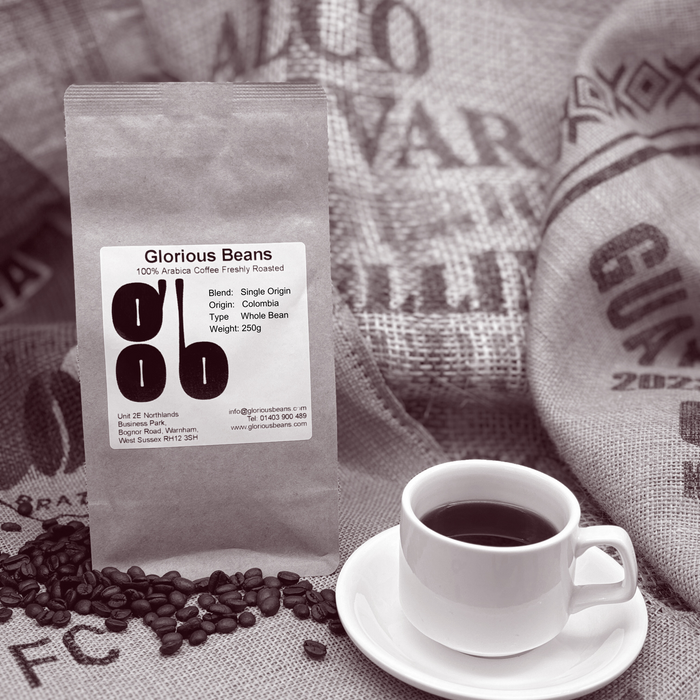How to Store SOE Single Origin Espresso for Optimal Freshness
How to Store SOE Single Origin Espresso for Optimal Freshness
Blog Article
Exploring the Rich Tastes of Coffee Beans: a Deep Study Espresso and Blended Coffee Beans
When you check out the rich flavors of coffee beans, you discover an intricate world where each selection brings its own personality to your cup. Understanding the beginnings, refining approaches, and toasting techniques can change your coffee experience. As you navigate with the art of espresso and the creative thinking behind combined coffees, you'll start to appreciate the subtleties that make each sip one-of-a-kind. What you'll uncover following may change the means you appreciate your morning brew.
The Beginnings of Coffee Beans: Checking Out Terroir and Flavor Profiles
When you take a sip of coffee, you're not simply taking pleasure in a drink; you're experiencing an abundant tapestry of flavors formed by the beans' origins. Each area produces special flavor accounts affected by elevation, climate, and soil. Beans from Ethiopia commonly burst with brilliant, fruity notes, while those from Colombia often tend to provide a well balanced, nutty sweetness.
As you check out various origins, you'll observe just how terroir-- the environmental aspects affecting a plant-- plays a vital role - Single Origin Espresso. The exact same coffee selection can taste drastically various depending upon where it's grown
When you take into consideration these factors, you begin to appreciate the intricacy behind your mug. Each sip informs a tale of the land and the farmers who nurtured the beans. So, next time you delight, think of the journey your coffee took before it reached your hands, and enjoy those complex tastes that show its origin.
Understanding Espresso: The Art and Science Behind the Brew
When you think of coffee, it's not almost the strong flavor; it's also about the strategies that bring it to life. Recognizing just how different preparation methods influence preference can transform your brewing experience. Let's discover the complexities of espresso prep work and discover the special flavor profiles that make each mug unique.
Espresso Preparation Techniques
Coffee preparation is both a scientific research and an art, incorporating accurate strategies with a deep understanding of coffee. To begin, you'll want to choose high-quality, fresh roasted beans and grind them finely for ideal removal (Single Origin Espresso). The work size is essential; as well coarse, and your coffee will be weak, too great, and it'll be bitter
Next, tamp the premises equally in the portafilter to assure uniform removal. When you lock it right into the device, aim for a developing temperature in between 190 ° F and 205 °
F.As you pull the shot, expect the perfect removal time-- around 25-30 seconds. The outcome must be an abundant, velvety coffee with a gorgeous layer of crema ahead. With method, you'll understand these techniques.
Flavor Accounts Explained
The globe of coffee supplies an abundant tapestry of flavor profiles that can elevate your coffee experience. Light roasts typically showcase brilliant acidity and dynamic flavors, while dark roasts present deeper, bolder tones.
Understanding these profiles helps you choose the right coffee for your taste. Explore various blends can disclose shocking mixes. A well-crafted mix could balance the brilliant notes of an Ethiopian bean with the rich, chocolatey undertones of a Brazilian bean. Accept the journey of finding espresso's diverse tastes, and you'll change your coffee ritual into an amazing journey.
Handling Techniques: How They Impact Flavor and Aroma
While it could seem that the origin of coffee beans is one of the most considerable consider determining their taste and scent, the processing approaches utilized post-harvest play an equally important duty. You'll discover that these methods can substantially modify the final preference profile of your mug.
As an example, the washed procedure eliminates the fruit from the beans prior to fermentation, typically resulting in a cleaner, brighter taste. On the other hand, the natural procedure leaves the fruit undamaged during drying out, resulting in a sweeter, fruitier account.
Various other methods, like honey processing, strike an equilibrium, allowing some fruit mucilage to continue to be, offering a distinct intricacy.
Each processing method interacts with the beans' intrinsic characteristics, improving or silencing specific flavors and fragrances. So, when you sip that coffee or blended coffee, bear in mind that the trip from cherry to cup is influenced not simply by origin but likewise by just how those beans were processed.
Roasting Techniques: Unlocking the Full Potential of Coffee Beans
Roasting methods are necessary for exposing the complete potential of coffee beans, as they transform raw, environment-friendly beans right into the aromatic, flavorful coffee you appreciate. The choice of roasting method-- light, medium, or dark-- substantially affects flavor profiles. Light roasts preserve the beans' natural acidity and fruity notes, while medium roasts balance sweetness and richness. Dark roasts, on the other hand, emphasize bold, great smoky flavors.
You can try out toasting times and temperature levels to discover your ideal brew. A slower roast at reduced temperature levels permits complicated tastes to establish, while a quicker roast can escalate resentment. Focus on the fractures during toasting; the initial fracture indicates a light roast, while the 2nd split signals a dark roast. By understanding these methods, you'll expose a world of taste, raising your coffee experience to new elevations. Take pleasure in every sip, knowing the treatment that went into your cup!
The Magic of Blended Coffee: Developing Distinct Taste Experiences
Producing a distinct taste experience with mixed coffee can change your morning routine into an expedition of preference. By combining various beans from various areas, you can expose a symphony of flavors that boost your cup to brand-new heights. Each mix deals an unique account, stabilizing level of acidity, body, and sweet taste to develop something really unique.
When you pick a blend, you're not just selecting a coffee; you're selecting a trip across varied landscapes and societies. Exploring with various mixes allows you to find your individual favorites, whether you appreciate fruity notes or abundant, chocolatey undertones.

Tasting Notes: Recognizing the Nuances in Your Mug
As you drink your coffee, you could notice a spectrum of tastes dancing on your taste buds, each revealing the complexities of the beans. You might taste the intense acidity similar to citrus or the deep, abundant notes comparable to dark delicious chocolate. The sweetness can stimulate honey or caramel, balancing the general account magnificently.
Pay focus to the body of the coffee-- does it feel airy and light, or is it full and luscious? The finish, as well, supplies hints; a sticking around aftertaste may mean nuttiness or floral touches.

Don't neglect to explore the unique features of different origins, as each region passes on distinctive flavors - Single Origin Espresso. For example, Ethiopian coffees usually present fruity notes, while Colombian beans could display an extra rounded sweetness. By acknowledging these nuances, you'll deepen your gratitude for every mug, boosting your coffee experience to new elevations

Brewing Methods: Maximizing Taste Removal for Every Bean
When you explore the different developing approaches, you'll find that each method can considerably impact the flavor profile of your coffee. From French press to pour-over, each method extracts various compounds, enhancing or muting details notes. For instance, using a French press permits oils to continue to be in the mixture, producing a richer taste, while pour-over emphasizes clearness and illumination.
Temperature and grind size likewise play necessary duties. A coarser SOE work functions best for chilly mixtures, while a fine grind is optimal for coffee. Trying out water temperature level-- in between 195 ° F and 205 ° F-- can reveal covert flavors, too.
Do not forget concerning steeping time; a quick extraction can lead to sour notes, while over-extraction might yield bitterness. By readjusting these variables, you can optimize taste extraction and absolutely raise your coffee experience. Delight in the journey of finding what approach ideal suits your palate!
Often Asked Concerns
What Is the Perfect Water Temperature Level for Brewing Coffee?
The perfect water temperature for developing coffee's in between 195 ° F and 205 ° F. If you make use of water that's also warm, you'll over-extract flavors; too cold, and you won't extract enough. Go for that wonderful area for the ideal mixture!
Exactly How Does Grind Dimension Influence Coffee Flavor?
Grind dimension substantially impacts coffee flavor. Better grinds remove extra oils and flavors, leading to a bolder taste, while coarser grinds yield a lighter flavor. Readjusting work dimension aids you accomplish your preferred coffee profile.
Are There Health Advantages Linked With Drinking Coffee?

What Is the Difference Between Arabica and Robusta Beans?
Arabica beans are smoother and sweeter, frequently including fruity tastes, while robusta beans are stronger with a bitter taste and greater caffeine material. You'll notice these distinctions in scent and brewing experience.
Just How Can I Shop Coffee Beans for Freshness?
To save coffee beans for freshness, keep them in an impermeable container, away from wetness, light, and heat. You'll keep their flavor much longer if you only grind what you require right before developing.
Discovering the Rich Tastes of Coffee Beans: a Deep Dive Into Espresso and Blended Coffee Beans.
When you discover the rich tastes of coffee beans, you discover a complex globe where each variety brings its own personality to your cup.When you take a sip of coffee, you're not simply delighting in a beverage; you're experiencing a rich tapestry of tastes formed by the beans' origins.Roasting strategies are vital for revealing the complete potential of coffee beans, as they change raw, green beans into the fragrant, tasty coffee you appreciate.As you sip your coffee, you may notice a spectrum of tastes dancing on your taste, each revealing the details of the beans.
Report this page